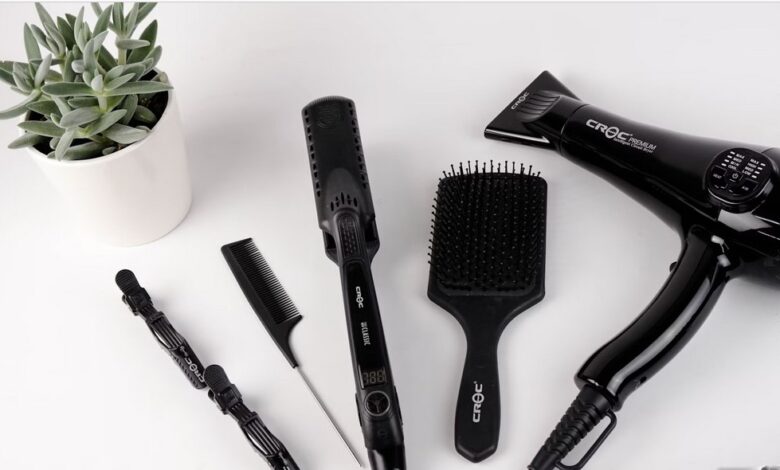Why Should Hair Relaxer Lawsuits Matter to Consumers?

Our relationship with beauty is a complex one. We strive for products that enhance our features and express our individuality. Yet, amidst the quest for the perfect look, a crucial question often goes unasked: are these beauty products truly safe?
Hair relaxers, a staple in many beauty routines for generations, are facing increased scrutiny. Recent legal challenges against hair relaxer manufacturers have sparked worries for everyday consumers. These lawsuits highlight potential health risks associated with the chemicals in these straightening treatments.
But the impact goes beyond the courtroom. These legal battles have the power to transform the beauty industry itself, potentially pushing for stricter regulations and a focus on consumer safety.
Let’s delve deeper into why hair relaxer lawsuits matter for making informed choices and why the beauty industry should prioritize our well-being.
Understanding Hair Relaxers
Hair relaxers are chemical treatments designed to alter hair texture. These products work by breaking down disulfide bonds in hair keratin. This process effectively straightens naturally curly or kinky hair.
There are two primary types of hair relaxers: lye and no-lye. Lye relaxers, which are highly coveted in the market, consist of sodium hydroxide as the primary active component. On the other hand, no-lye relaxers use calcium hydroxide or guanidine carbonate. Both types operate at a high pH level, typically between 10 and 14.
The application process involves spreading the relaxer on the hair shaft. It is left for a specific time, depending on the hair texture and desired results. After application, the hair is thoroughly rinsed and neutralized.
Common ingredients in hair relaxers include:
- Base (sodium hydroxide or calcium hydroxide)
- Emollients (mineral oil, petrolatum)
- Emulsifiers (cetyl alcohol, stearyl alcohol)
- Humectants (glycerin, propylene glycol)
- Preservatives (parabens, phthalates, and formaldehyde releasers)
These ingredients work together to straighten hair. However, according to TorHoerman Law, chemical hair relaxers are under intense scrutiny. Their prolonged use has been linked to several cancers in women. This is especially true for Black women, who use relaxers to straighten their curls.
The Rise of Hair Relaxer Lawsuits
In recent years, there has been a significant increase in hair relaxer lawsuits against manufacturers. These legal actions stem from alleged links between hair relaxers and serious health conditions.
Key allegations in these lawsuits include:
- Increased risk of uterine cancer
- Higher incidence of endometriosis
- Potential for fibroids and other reproductive issues
- Scalp burns and hair loss
Several major companies face litigation, including:
- L’Oréal
- Revlon
- Namaste Laboratories
- Soft Sheen-Carson
It was only in 2022 that the first lawsuit was filed by a woman named Jenny Mitchell. She initiated legal proceedings against five corporations, including L’Oreal, alleging that their products were the cause of her uterine cancer.
As of June 2024, there are currently over 8,000 pending chemical hair relaxer lawsuits in multidistrict litigation, as reported by Drugwatch. Also, there have been around 9,000 cases filed by the affected.
Health Risks from Using Hair Relaxers
The National Institute of Health (NIH) published a pathbreaking study in October 2022. It indicated women who used hair relaxers more than four times a year had a greater risk of uterine cancer.
According to The Guardian, this study marked a turning point after more than a decade of research linking endocrine disruptors to these cancers.
In the previous section, there was a mention of elements like formaldehyde, phthalates, and parabens. These three are the top contenders for wreaking havoc on your health.
Formaldehyde is a known human carcinogen. According to Healthline, this chemical is present in most hair-smoothing products and is released as a gas into the air when heated. Prolonged inhalation of this toxic gas can lead to both short- and long-term adverse health effects. These include respiratory issues, asthma, and cancer.
Phthalates and parabens are not far behind. These are strong endocrine disruptors. They can imitate hormones that occur naturally or obstruct hormone receptors. Their presence can lead to atypical hormone production, secretion, or transportation throughout the body.
The hormonal fluctuations can result in reproductive issues such as impaired sperm quality, miscarriage, and endometriosis. Additionally, they can result in thyroid dysfunction and atypical patterns of growth and maturation.
With continued and unchecked use, you are throwing your health into an abyss of fatal consequences.
The FDA Oversight Problem
The FDA’s limited oversight of hair straighteners in the US creates a concerning gap in consumer safety. Unlike some medications and medical devices, hair straighteners don’t require pre-market approval.
This lack of scrutiny leaves you vulnerable to potential health risks. The big shots are responsible for ensuring safety, but without pre-market evaluation, transparency and accountability suffer. These giants could prioritize profits over safety, leaving consumers in the dark about potential health risks.
The Far-Reaching Ripples of the Hair Relaxer Debate
The hair relaxer controversy isn’t just about beauty—it’s a mirror reflecting deep-seated societal issues. Historically, relaxer use has been higher among Black women, spotlighting racial and economic disparities in beauty standards. This revelation is sparking conversations about cultural identity and self-acceptance.
As natural hair movements gain traction, we’re witnessing a seismic shift in beauty ideals. More people are embracing their natural textures, challenging long-held norms. This change is reshaping the cosmetics industry, pushing for more inclusive product lines.
Looking ahead, the FDA might tighten its grip on cosmetics regulation. We’re likely to see stricter labeling requirements and more rigorous safety testing. Ongoing research into the long-term effects of relaxers could further shake up the industry.
The future of hair relaxers? It’s uncertain. We might see a decline in traditional relaxers, replaced by safer alternatives. Or a renaissance of natural hair care products. One thing’s for sure—the beauty landscape is evolving, and consumers are in the driver’s seat.
FAQs
1. Are hair relaxers linked to any health risks?
Some studies suggest a link between frequent use and an increased risk of uterine cancer, endometriosis, and fibroids. Additionally, the chemicals in hair relaxers, like formaldehyde, phthalates, and parabens, might cause respiratory problems, hormone disruption, and other health issues.
2. Why are there lawsuits against hair relaxer manufacturers?
Lawsuits allege that hair relaxer manufacturers failed to adequately warn consumers about the potential health risks associated with their products. Moreover, some lawsuits claim manufacturers may have downplayed or concealed these risks, prioritizing profits over human safety.
3. What does the rise of hair relaxer lawsuits mean for consumers?
These lawsuits could have a significant impact on the beauty industry. They may lead to stricter regulations for hair relaxers, clearer labeling, and potentially safer product formulations.
Consumers can benefit from increased transparency and potentially safer alternatives in the future. However, ongoing research is needed to understand the long-term effects of hair relaxers fully.
All in all, the rise of hair relaxer lawsuits isn’t just a legal battle; it’s a wake-up call for the beauty industry. It exposes a gap in safety regulations and raises concerns about prioritizing profits over consumer health.
These lawsuits hold the potential to reshape the industry, demanding greater transparency and accountability. Ultimately, they can empower consumers to make informed choices about the products and advocate for a beauty industry that prioritizes safety and inclusivity.
This movement extends beyond hair relaxers, sparking conversations about societal beauty standards and self-acceptance. It’s a ripple effect that could redefine the future of beauty.






